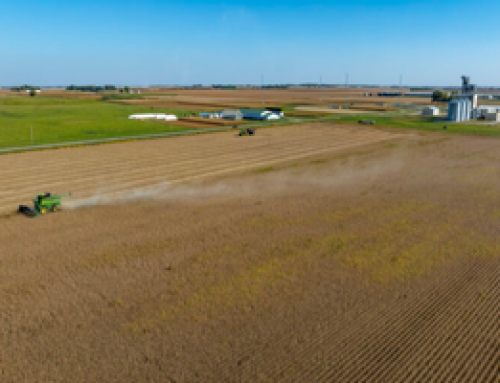| Corn that has been genetically engineered to resist corn rootworms like this one has become increasingly less effective. Purdue University entomologist Christian Krupke and his colleagues at 12 universities publish a multi-state analysis of the problem in the journal Science. (Purdue University Extension Entomology/John Obermeyer) |
By C.J. Miller, Hoosier Ag Today
An analysis of data covering 12 years and 10 U.S. Corn Belt states reveals that farmers suffer economic loss from the overuse of genetically engineered corn designed to combat rootworm pests.
Christian Krupke, a Dean’s Fellow and professor of entomology at Purdue University, and 19 co-authors from 12 other universities reported their results in the most recent issue of the journal Science. The retrospective study demonstrated that the pest landscape has fundamentally changed in many key corn-growing areas of the U.S. since 2004, the initial year of broad adoption of transgenic corn hybrids targeting corn rootworms. The study shows pest pressures in much of the region declined dramatically following introduction of these hybrids, reducing the need for broad deployment of the rootworm-specific traits.
The project, led by Krupke, documented greater rootworm pest pressure in the Corn Belt states of Illinois, Iowa, Minnesota, Nebraska, North Dakota, South Dakota and Wisconsin. In these states, farmers more commonly plant corn continuously. In the eastern Corn Belt states of Indiana, Michigan and Ohio, as well as in other states, farmers practice crop rotation that reduces the need for control through genetically engineered seed or applied insecticides.
However, the use of transgenic corn hybrids targeting rootworm pests has been remarkably similar across the entire region. This study explored the consequences of this disconnect.
“This study shows the value of long-term, applied research datasets from public sector field research,” Krupke said. The short duration and shifting priorities of research funding streams make it increasingly rare to have such scope and coverage in biological data. “These are among the most useful types of data for developing policy recommendations.”
In 2003, scientists introduced the first genetically engineered corn hybrid trait lethal to corn rootworms and derived from the bacterium Bacillus thuringiensis (Bt). Since then, farmers have extensively used Bt corn hybrids. Subsequently, multiple field studies have reported Bt resistance in rootworms since 2009, raising doubts about the long-term viability of the Bt traits.
The study emerged from observations made by a working group of corn entomologists who meet annually to discuss the impact of pests on the commodity. Several years ago, Krupke noticed a difference between corn rootworm reports in the eastern and western Corn Belt states.
“We were all in different regions of the country, yet doing much the same thing,” Krupke said. “We were still managing the pest using Bt hybrids as if rootworm was a prime driver of yield loss in states like Indiana. It wasn’t and it hadn’t been for some time.
From 2014 to 2016, yield losses attributed to rootworm damage amounted to 47.5 bushels per acre in western states and 8.5 bushels per acre in eastern states, the researchers estimated.
The study quantified the two costs of using the Bt hybrid. One cost was the substantial technology fee, a premium growers pay when buying the seed. The other cost was the erosion of pest susceptibility to the Bt toxin.
“If you think of a Bt hybrid as a finite resource, like a declining debit card, every time you use it, you erode a little bit of susceptibility,” Krupke said. “So, it’s a little less likely that it will work as well next time.”
For their part, growers select elite hybrid seed genetics that will produce the best yields. Those hybrids often bundle a variety of other desirable traits, including expression of multiple Bt toxins, whether they are needed or not.
To read entire report, click here.




